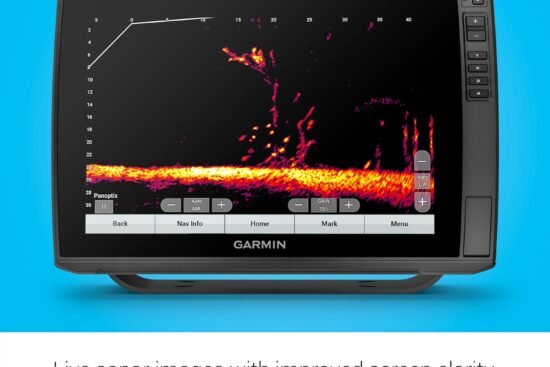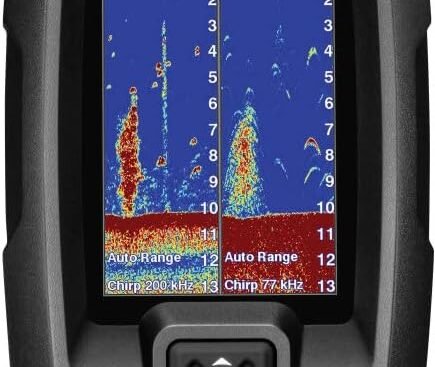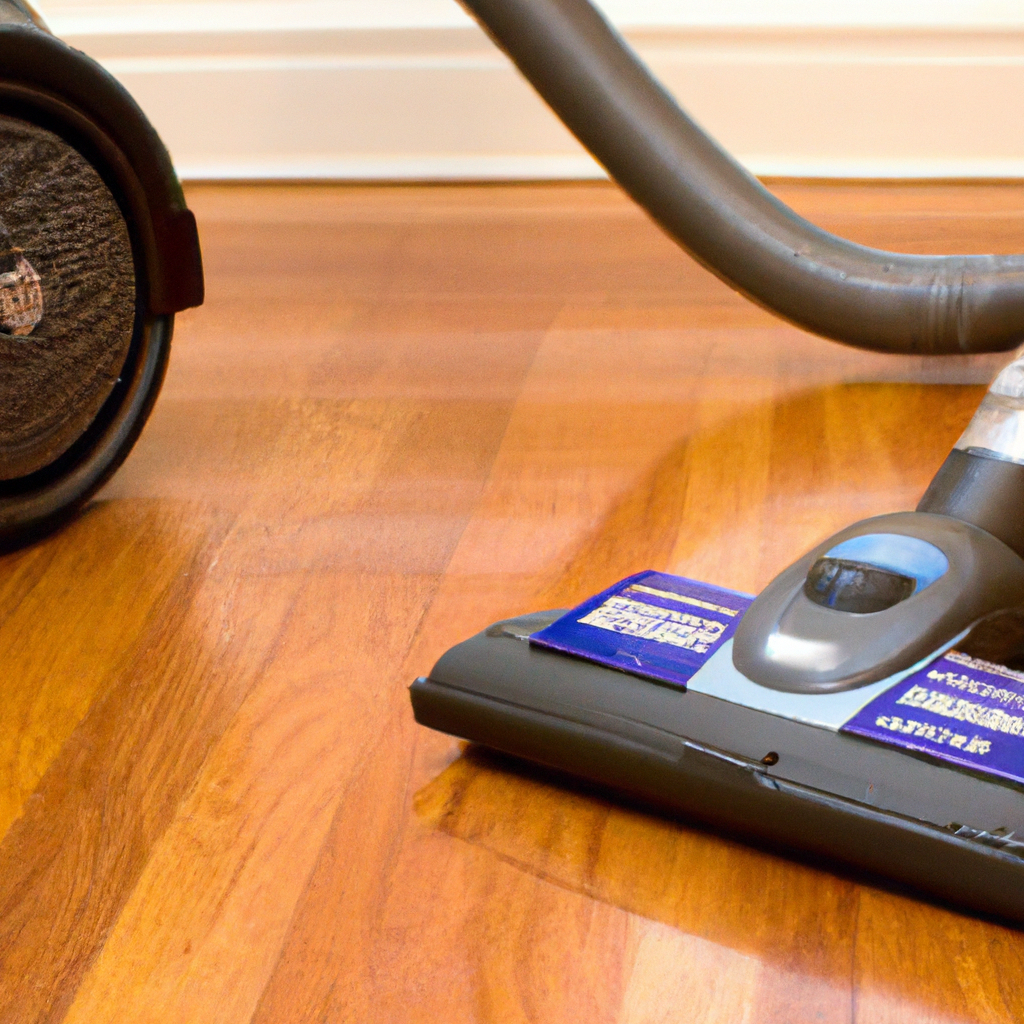
You’ve recently installed beautiful hardwood floors in your home, but now you’re faced with the task of keeping them clean and free from dust and debris. With so many vacuum options available on the market, how do you know which one is best suited for your hardwood floors? In this article, we will explore the key factors to consider when evaluating vacuums for optimum performance on hardwood floors, so you can keep your floors looking flawless and pristine.
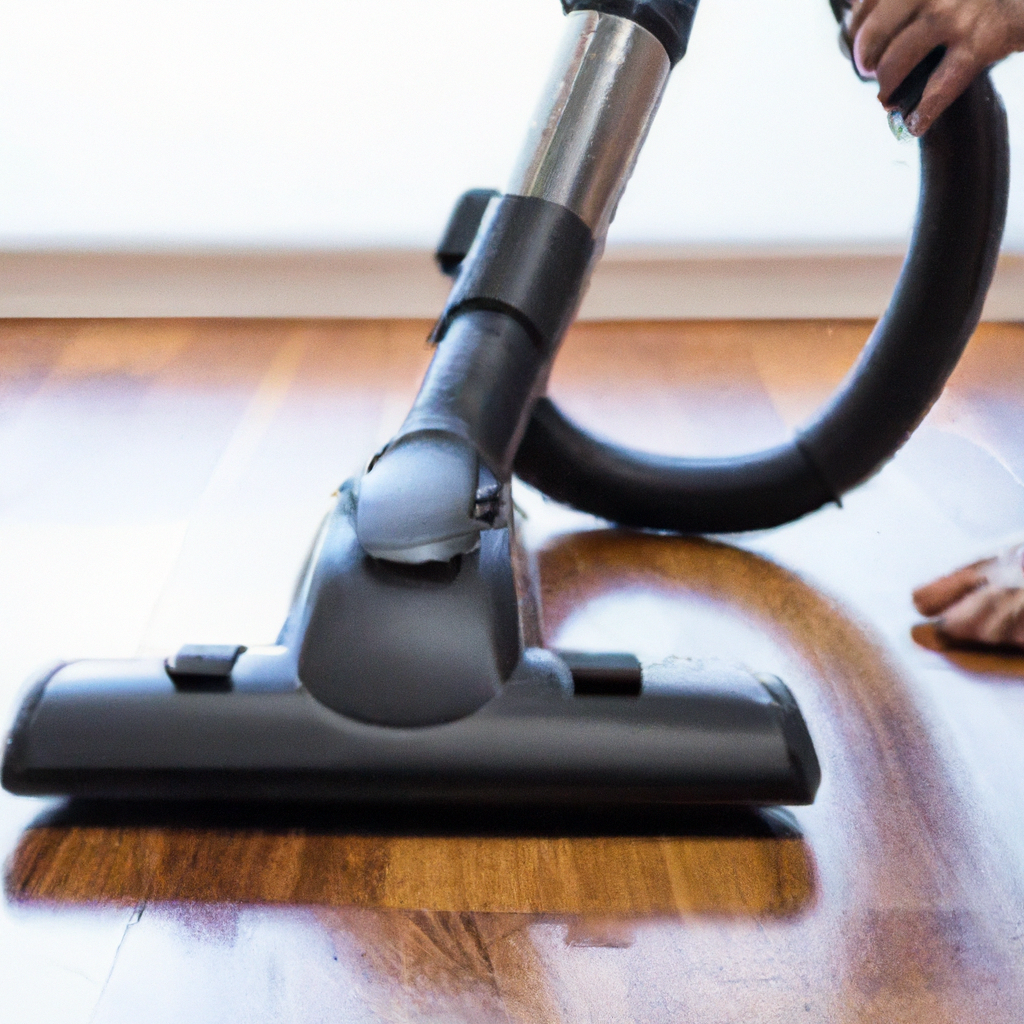
1. Consider the Type of Vacuum
When it comes to selecting a vacuum for your hardwood floors, it’s important to consider the type of vacuum that would best suit your needs. There are several types to choose from, each with its own advantages and disadvantages.
1.1 Upright Vacuum
Upright vacuums are known for their powerful suction and usually come equipped with a wide cleaning path. They are designed with a brushroll at the base, making them effective at removing dirt and debris from carpets. However, not all upright vacuums are suitable for hardwood floors, as the brushroll can potentially damage the delicate surface.
1.2 Canister Vacuum
Canister vacuums are versatile and often come with a variety of attachments, making them ideal for cleaning hardwood floors. With a separate canister and powerhead, they offer greater maneuverability and are less likely to cause damage to the floor. The canister design allows for easy storage and transportation, making it a convenient option for many homeowners.
1.3 Stick Vacuum
Stick vacuums are lightweight and compact, making them easy to handle and store. They are typically battery-powered and offer cordless operation for maximum convenience. While they may not have the same suction power as upright or canister vacuums, they are still effective at picking up dirt and dust from hardwood floors.
1.4 Robot Vacuum
Robot vacuums have gained popularity due to their autonomous cleaning capabilities. These smart devices can navigate around your home and clean various surfaces, including hardwood floors. They often come with sensors to avoid obstacles and can be programmed to clean at specific times. However, they may not offer the same level of deep cleaning as other types of vacuums.
1.5 Handheld Vacuum
Handheld vacuums are small, portable, and easy to use. While they may not be as powerful as upright or canister vacuums, they are perfect for quick cleanups and reaching tight spaces. They are particularly useful in combination with another vacuum if you prefer a more thorough cleaning for your hardwood floors.
2. Assess the Suction Power
The suction power of a vacuum plays a crucial role in its cleaning performance, especially when it comes to hardwood floors. It determines how effectively the vacuum can pick up dirt, dust, and debris.
2.1 Important Role of Suction Power
Proper suction power is essential for removing fine particles from the surface of hardwood floors without causing damage. It ensures that dirt is efficiently sucked into the vacuum’s dustbin, preventing it from being pushed or scattered around.
2.2 High Suction Power for Effective Cleaning
A vacuum with high suction power is recommended for optimum cleaning on hardwood floors. It can effectively lift embedded dirt and debris from the floor’s surface, leaving it clean and polished. Look for vacuums that offer adjustable suction settings to cater to different cleaning needs.
2.3 Factors Affecting Suction Power
Several factors can affect the suction power of a vacuum. The motor strength and design, the efficiency of the filtration system, and the overall airflow all contribute to the vacuum’s performance. It’s crucial to choose a vacuum that excels in these areas to ensure maximum cleaning power on hardwood floors.
2.4 Optimal Suction Power for Hardwood Floors
For hardwood floors, it’s important to strike a balance between suction power and potential damage. While high suction power is desirable, it should be complemented by adjustable settings to avoid excessive suction that could harm the delicate hardwood surface. Consider vacuums that offer varying power modes to tailor the cleaning intensity to your specific needs.
3. Evaluate the Brushroll
The brushroll of a vacuum is responsible for agitating and loosening debris from the floor’s surface, allowing the suction to pick it up. When it comes to hardwood floors, the brushroll must be carefully evaluated to prevent any scratching or damage.
3.1 Suitable Brushroll Types
Opt for a vacuum that offers a suitable brushroll type for hardwood floors. A soft brushroll with gentle bristles is recommended to prevent scratching while still effectively removing dirt. Avoid vacuums with stiff or rough bristles, as they can potentially leave marks on the delicate hardwood surface.
3.2 Brushroll Height Adjustment
Vacuums with a brushroll height adjustment feature are ideal for hardwood floors. This feature allows you to raise or lower the brushroll to the appropriate height, depending on the floor surface. Lower the brushroll for deeper cleaning on carpets, and raise it for a gentle pass over hardwood floors.
3.3 Soft Bristles vs. Hard Bristles
The brushroll’s bristles also play a significant role in preventing scratches on hardwood floors. Soft bristles are the best choice, as they are less likely to cause damage while still effectively agitating and lifting dirt and debris. Hard bristles, on the other hand, can potentially leave marks or even gouges on the surface.
3.4 Tangle-Free Brushroll
Consider vacuums that come with a tangle-free brushroll feature. This helps prevent hair, string, or other types of debris from getting tangled around the brushroll, which can affect its performance and potentially damage the hardwood floor. A tangle-free brushroll ensures uninterrupted and efficient cleaning.
4. Check for Adjustable Speed Settings
Adjustable speed settings in a vacuum can significantly enhance its versatility and performance on hardwood floors. It allows you to tailor the cleaning intensity to the specific needs of your floors.
4.1 Importance of Adjustable Speed Settings
Adjustable speed settings are important for maintaining delicate hardwood floors. They allow you to reduce the speed or suction power when dealing with more fragile or sensitive areas, such as areas with scratches or high-gloss finishes. On the other hand, increasing the speed can help tackle stubborn debris or heavily soiled areas.
4.2 Gentle Cleaning for Delicate Hardwood Floors
Hardwood floors with delicate finishes or sealants require special care. Vacuums with adjustable speed settings can be dialed down to provide a gentle cleaning that won’t damage the surface. This feature ensures that you can clean your floors effectively without compromising their integrity.
4.3 Enhanced Cleaning Power for Stubborn Debris
Some hardwood floors may accumulate stubborn debris or dirt over time. The ability to increase the speed or suction power of the vacuum allows for a deeper and more effective clean. Adjustable speed settings enable you to tackle these tougher areas without resorting to harsh scrubbing or potentially damaging cleaning methods.
4.4 Optimal Speed Settings for Different Floor Conditions
The ability to adjust the speed settings of your vacuum allows you to optimize its performance for different floor conditions. Whether you’re cleaning high-traffic areas, specific rooms, or heavily soiled spots, having the flexibility to tailor the cleaning process to each scenario ensures the best possible cleaning results.
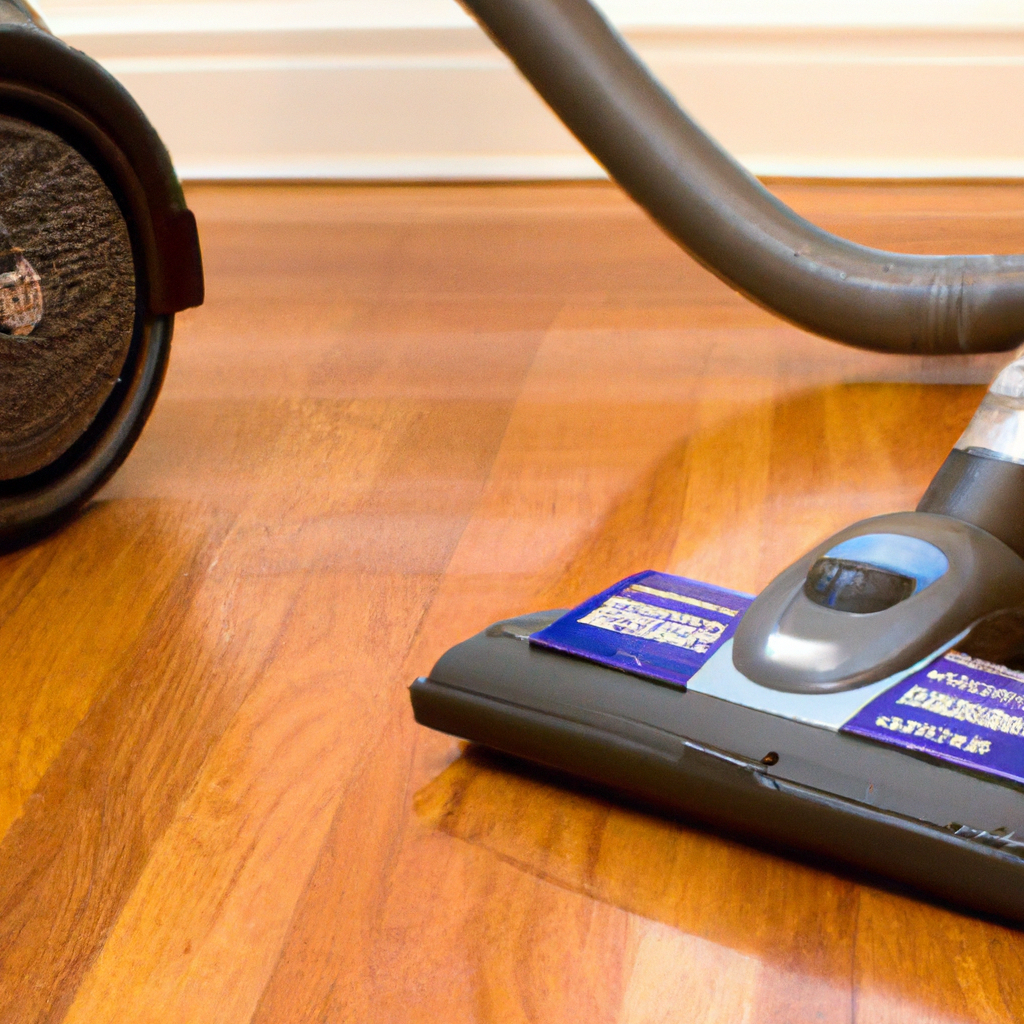
5. Consider the Filtration System
A reliable filtration system is essential for maintaining clean air quality and trapping allergens and particles while vacuuming hardwood floors. Look for vacuums with effective filtration features that suit your specific needs.
5.1 HEPA Filtration
HEPA (High-Efficiency Particulate Air) filtration is considered one of the most effective filtration systems available. It can trap particles as small as 0.3 microns, including dust mites, pollen, and pet dander. This is particularly beneficial for those with allergies or asthma and helps improve overall indoor air quality.
5.2 High-Efficiency Filtration
Vacuums with high-efficiency filtration systems are designed to capture a large percentage of particles and allergens. While they may not meet the strict standards of HEPA filtration, they still provide effective filtration capabilities. Ensure that the vacuum’s filter is easily accessible and washable for regular maintenance.
5.3 Allergen Trapping
For allergy sufferers or those with respiratory sensitivities, choosing a vacuum with superior allergen trapping capabilities is important. Look for vacuums that not only have efficient filtration but also have a sealed system to prevent any particles from escaping back into the air during the cleaning process.
5.4 Easy-to-Clean Filters
Regular maintenance of the vacuum’s filters is crucial for optimal performance. Consider vacuums with easily removable and washable filters, as this will help prolong their lifespan and maintain the vacuum’s overall effectiveness. Cleaning the filters regularly ensures that the vacuum continues to operate at its highest capacity.
6. Look for Specialized Attachments
Specialized attachments can enhance the versatility of a vacuum and make it more suitable for hardwood floor cleaning. Consider vacuums that come with the following attachments:
6.1 Dusting Brush
A dusting brush attachment is ideal for gently removing dust from hardwood floors without scratching. Its soft bristles allow for effective cleaning without causing any damage.
6.2 Crevice Tool
A crevice tool attachment is helpful for reaching narrow spaces and corners. It can effectively clean along baseboards, between furniture, and in other hard-to-reach areas where dirt and debris tend to accumulate.
6.3 Upholstery Tool
An upholstery tool attachment is useful for cleaning upholstered furniture and drapes. While not directly related to hardwood floor cleaning, it adds versatility to your vacuum and allows you to clean multiple surfaces within your home.
6.4 Hard Floor Tool
A hard floor tool attachment is specifically designed for cleaning delicate surfaces like hardwood floors. It typically has soft bristles and a wide cleaning path to effectively pick up dirt and crumbs without scratching the floor.
6.5 Pet Hair Attachment
For pet owners, a pet hair attachment can be a game-changer. It is specifically designed to remove pet hair from various surfaces, including hardwood floors. Look for specialized brushes or comb-like attachments that effectively grab and remove pet hair without tangling.
6.6 Extension Wand
An extension wand attachment allows you to reach high areas, such as ceilings or curtains, without the need for a step stool or ladder. It adds convenience and flexibility to your vacuuming routine.
7. Consider the Weight and Maneuverability
The weight and maneuverability of a vacuum play a significant role in its ease of use and overall performance on hardwood floors.
7.1 Lightweight Design
A lightweight vacuum is easier to maneuver and carry around, reducing strain on your wrists and back. It allows for effortless movement across your hardwood floors and makes the cleaning process more enjoyable.
7.2 Swivel Steering
Vacuums with swivel steering offer enhanced maneuverability. They can easily navigate around furniture, corners, and other obstacles with minimal effort. Swivel steering allows for efficient cleaning and ensures that every nook and cranny is reached.
7.3 Easy Maneuverability
Consider a vacuum that is easy to maneuver, especially if you have large or open areas of hardwood flooring to clean. Smooth-gliding wheels and a well-designed handle will make it easier to push and pull the vacuum, reducing fatigue during extended cleaning sessions.
7.4 Low-Profile Design
A vacuum with a low-profile design is particularly beneficial for cleaning under furniture or other hard-to-reach areas. It allows the vacuum to access tight spaces and ensures that every inch of your hardwood floors is thoroughly cleaned.
7.5 Portable and Compact
If you have multiple levels in your home or require a portable option, consider a vacuum that is lightweight and compact. This allows for easy storage and transport, making it convenient to carry the vacuum up and down stairs or move it between rooms.
8. Assess the Noise Level
The noise level produced by a vacuum can impact the overall cleaning experience, especially in homes with open floor plans or when cleaning during quiet hours.
8.1 Importance of Noise Level
A vacuum with a lower noise level is beneficial for a more peaceful cleaning experience. It allows for quieter operation, reducing disturbance to household members or neighbors. It is particularly useful if you have young children, pets, or noise-sensitive individuals in your home.
8.2 Quieter Vacuums for Peaceful Cleaning
Look for vacuums that are designed to operate quietly. Many modern vacuums come with noise reduction features, such as insulated motors and sound-dampening materials, to ensure a quieter cleaning process. Quieter vacuums allow you to clean your hardwood floors without causing unnecessary noise pollution.
8.3 Factors Affecting Noise Level
The noise level produced by a vacuum is influenced by various factors, including the overall design, motor power, and the quality of insulation. It’s essential to consider these factors to ensure that the vacuum you choose operates at a noise level that is acceptable to you and your household.
8.4 Optimal Noise Level for Home Use
While there is no strict definition of an optimal noise level for a vacuum, it’s generally preferable to select a model that produces minimal noise. A noise level of around 60 to 70 decibels is considered relatively quiet and should not cause significant disturbance during your cleaning routine.
9. Consider the Cord Length and Type
The cord length and type of a vacuum are important factors to consider for convenience and ease of use.
9.1 Adequate Cord Length for Convenience
Consider vacuums with an adequate cord length to minimize the need for frequent unplugging and re-plugging. A longer cord allows for more flexibility and coverage, reducing the time and effort spent on finding accessible power outlets while cleaning your hardwood floors.
9.2 Retractable Cord
Vacuums with a retractable cord feature offer added convenience and eliminate the hassle of manually winding up the cord after each use. This feature allows for quick and easy storage, saving time and preventing tangles or knots in the cord.
9.3 Cordless Vacuums for Freedom of Movement
Cordless vacuums provide the ultimate freedom of movement, allowing you to clean your hardwood floors without being restricted by a power cord. They operate on battery power, so it’s important to consider the battery life and charging time when evaluating cordless options.
9.4 Battery Life and Recharge Time
If you opt for a cordless vacuum, consider the battery life and recharge time. A longer battery life ensures that you can clean larger areas without interruption, while a shorter recharge time reduces downtime between cleaning sessions. Look for models with removable and replaceable batteries for extended cleaning sessions if necessary.
10. Read Reviews and Compare Brands
Before making a final decision, take the time to read reviews and compare different brands and models. This will provide valuable insights into the performance, durability, and overall customer satisfaction of various vacuums.
10.1 Importance of Consumer Reviews
Consumer reviews offer real-life experiences and opinions on vacuums for hardwood floors. They can highlight both the positive and negative aspects of a particular model, helping you make a more informed decision. Pay attention to reviews from individuals who have similar needs or hardwood floor types as yours.
10.2 Online Customer Ratings and Testimonials
Online customer ratings and testimonials provide a quick overview of a vacuum’s popularity and overall satisfaction levels. They can give you a general idea of how well a vacuum performs on hardwood floors and whether it meets customer expectations.
10.3 Brand Reputation and Reliability
Consider the reputation and reliability of the brand before purchasing a vacuum. Well-established brands with a good track record of producing high-quality and durable vacuums are often a safe choice. Research the brand’s history, customer service, and warranty policies to ensure a positive shopping experience.
10.4 Comparing Features and Specifications
Comparing the features and specifications of different vacuums can help you narrow down your choices. Look for key factors such as suction power, brushroll type, filtration system, attachments, and other features that align with your specific hardwood floor cleaning needs.
10.5 Consider Budget and Value for Money
Last but not least, consider your budget and the value for money offered by each vacuum. Determine the features and capabilities that are most important to you and find a vacuum that offers the best combination of performance, durability, and affordability. Remember, investing in a high-quality vacuum will likely save you money in the long run by protecting your hardwood floors and reducing the need for professional cleaning or repairs.
By considering the type of vacuum, assessing the suction power, evaluating the brushroll, checking for adjustable speed settings, considering the filtration system, looking for specialized attachments, assessing the weight and maneuverability, evaluating the noise level, considering the cord length and type, and reading reviews and comparing brands, you can confidently select a vacuum that will provide optimum performance on your hardwood floors. Happy cleaning!

